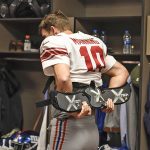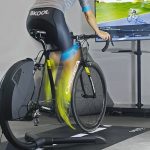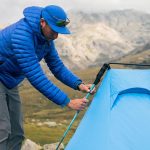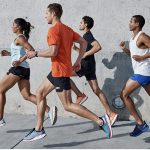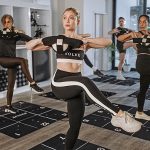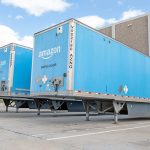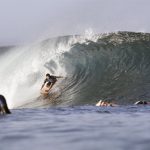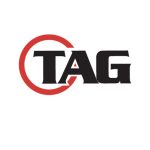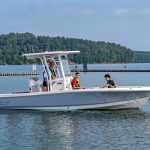Acquisitions again played a large role in assisting sporting goods industry Softgoods vendors to post stronger earnings in the first quarter, but Hardgoods vendors as a group took a hit as weakness in the Golf sector and a tougher-than-usual Q1 for the Winter Sports folks combined to drag bottom line results lower for the period. However, the acquisitions closed over the last year still had a significant impact on the top-line in both sectors in the first quarter, delivering about 20% of the total revenues gains for the period. Despite continued weakness in much of their home turf, European vendors have started to pick up steam against the FX rate-aided top-line growth of their U.S. competitors, due in large part to stronger gains in Asia.
Companies in the Softgoods sector, which includes Footwear and Apparel, saw profit growth outpace sales growth by more than a two-to-one margin; quite impressive, but less than the three-to-one ratio seen in the fourth quarter. The Hardgoods sector again saw sales growth, with about half of the gain from acquisitions, but saw profit slide by nearly 50% due to the issues in Golf and Winter Sports.
Sports Executive Weekly presents an overview of first quarter vendor results in the chart on page two. Results are posted for those companies that have reported results for the period ended closest to the end of March. A complete analysis of the quarter, including those apparel companies with quarters that end in April, is included in the full quarterly report due in late June.
Total sales increased 12.5% in the first quarter for those companies tracked in this report, while net income rose 23.2% for the period. Because the report is not a clear picture of the entire industry, SEW feels the total numbers are less significant than the trending information provided in the percentage increases and decreases. Return on Sales, which is the measure of net income as a percentage of sales, increased 90 basis points for the quarter versus the year-ago period, coming in at a very healthy 8.9% of sales versus 8.2% in Q1 last year. The number is skewed a bit by the companies whose profit is represented by operating income or EBIT, rather than net income.
It is best to use the ROS measure to look at the performance of a particular company versus its results in the year-ago period, or to assess companies that report on a like-for-like basis. For the first quarter, the gross margin for the reporting companies averaged 44.6% of sales for the quarter, up 140 basis points from the year-ago period, and roughly double the BPS gain reported in the fourth quarter. Strong GM improvement in Softgoods offset the Hardgoods decline for the period.
The Softgoods sector saw 12.3% organic growth in the first quarter, with Reebok, Phoenix Footwear, Russell Corp., Warnaco Swim, and VF Outdoor all getting gains from deals over the last year. The honors for most organic growth in the Softgoods sector again goes to Deckers for the third straight quarter, with sales jumping 45.2% in the period on the strength of the ongoing UGG phenomenon. Deckers shares also took the biggest hit over the last month, declining 36% since the company warned of a tough Q2 outlook. Continued reports from retailers over the last few weeks about weaker sandal sales probably dont help either. Columbia was another key winner in organic sales growth for the period, but they also warned of possible trouble ahead and a softer outerwear business for fall.
Biggest losers for the period included LaCrosse Footwear, which saw sales decline more than 20% in the quarter due to a loss of military business, and Saucony, which saw its lower-priced mall product run out of gas in the period and an increase in technical running wasnt enough to offset the decline. Delta Apparel had its second straight down quarter in sales but profits jumped nearly 43% as the company starts to realize the benefits of the acquisition of MJ Soffe. Soffe sales inched up 1.8% to $22.9 million for the fiscal third quarter.
For the first time in three quarters Nike Inc.s solid profit growth did not hold back the Softgoods sector as the company outperformed the average. Russell was the clear winner here thanks to acquisition help, but it was again Deckers that took the top honors for most organic profit growth with a 65.1% increase in net income and a very healthy 13.8% Return on Sales. Brand adidas, Delta, Skechers, Timberland, and Wolverine were also among the top performers for the period. Everlast was the only company that fell into the loss column for the quarter, but LaCrosse, Phoenix, and Saucony all saw profits decline for the period.
Sports Executive Weekly has approached the Hardgoods sector a bit differently for the quarter, opting to exclude the marine electronics, engines, and boats divisions of Brunswick and Johnson Outdoors from the report due in large part to SEWs constituency, which, for the most part, is not in the boat business. The other factor that weighed in the decision was the ability for those businesses to skew the numbers a great deal. The Johnson Outdoors watercraft business is included in the numbers presented on page two.
Organic sales in the Hardgoods sector were up just 2.4% for the period, due for the most part to sharp declines in revenues in the Winter Sports and Golf segments of the business, with both segments declining just under 1% for the period. The lone exception was TaylorMade-adidas Golf, which posted a 35% increase in sales when measured in U.S. Dollars. The K2 Sports division also saw a gain due to the acquisitions of Marker and Volkl, but organic growth was flat.
This quick review is but a summary of results for the quarter. All detailed company financial information can be found in Sports Executive Weekly issues over the last 60 days and the detailed peer group analysis will be made available in the Sports Executive Research report due in June.

